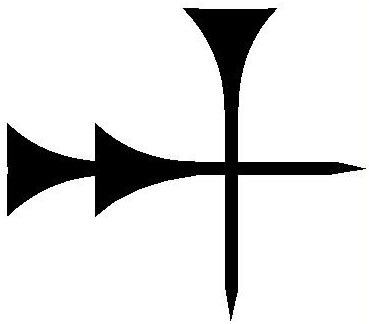 | ||
The cuneiform an sign, (or sumerogram AN), is a common, multi-use sign, a syllabic for an, and an alphabetic sign used for a, or n; it is common in both the Epic of Gilgamesh over hundreds of years, and the 1350 BC Amarna letters, and other cuneiform texts. It is also used for the designation of a "god", and is sometimes represented as a superscript: d, or capitalized: D, for "dingir", English language, "god". The example photo at right shows (2nd list), a list of 14 named gods, all with "an"; the first pair on the list AN-UTU, or DUTU, refers to the "sun-god", using Ud (cuneiform), as the sumerogram, namely UTU (sun Sumerogram).
Contents
Cuneiform an can also be found in compound form with another cuneiform sign, an example being DAGAL, . The older version of DAGAL used the 'god symbol' as a star within the sign: ; (older version of DAGAL, incorporating "star": ).
Epic of Gilgamesh usage
In the Epic of Gilgamesh, Tablets I-XII, "an" is used for the following meanings by the following numbers: an-(120) times, d-(593), AN-(27), and DINGIR-(76) times.
List of Babylonian Gods, etc.
From Budge's revised book on Babylonian Life and History, a list of many of the major gods from Babylonian history (and Sumerian):
